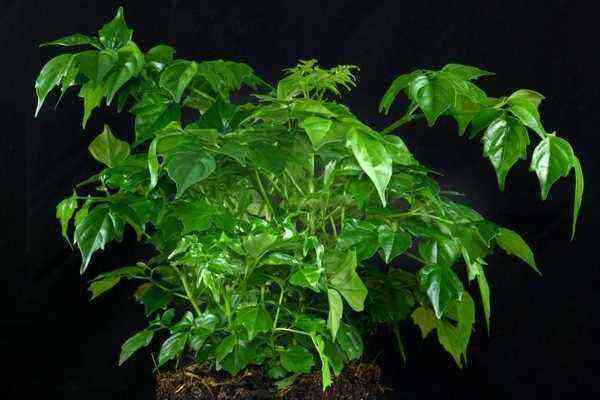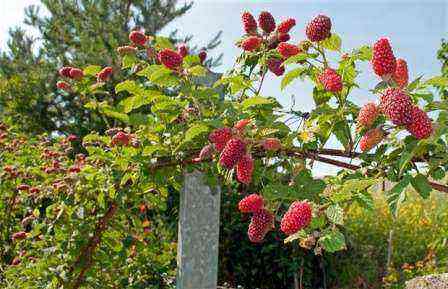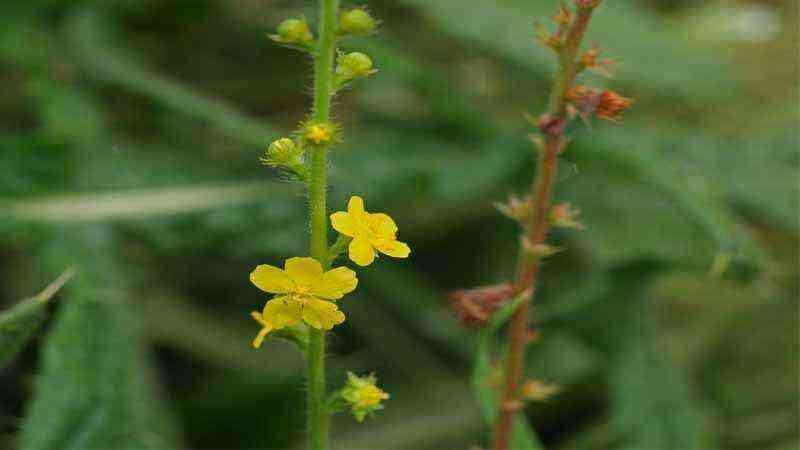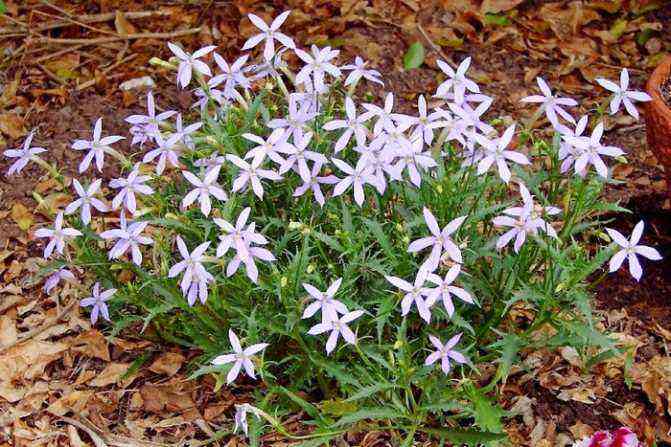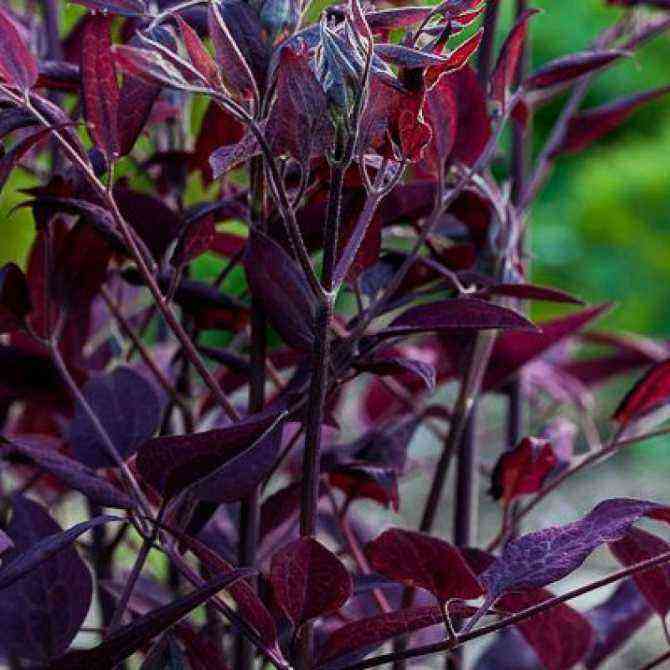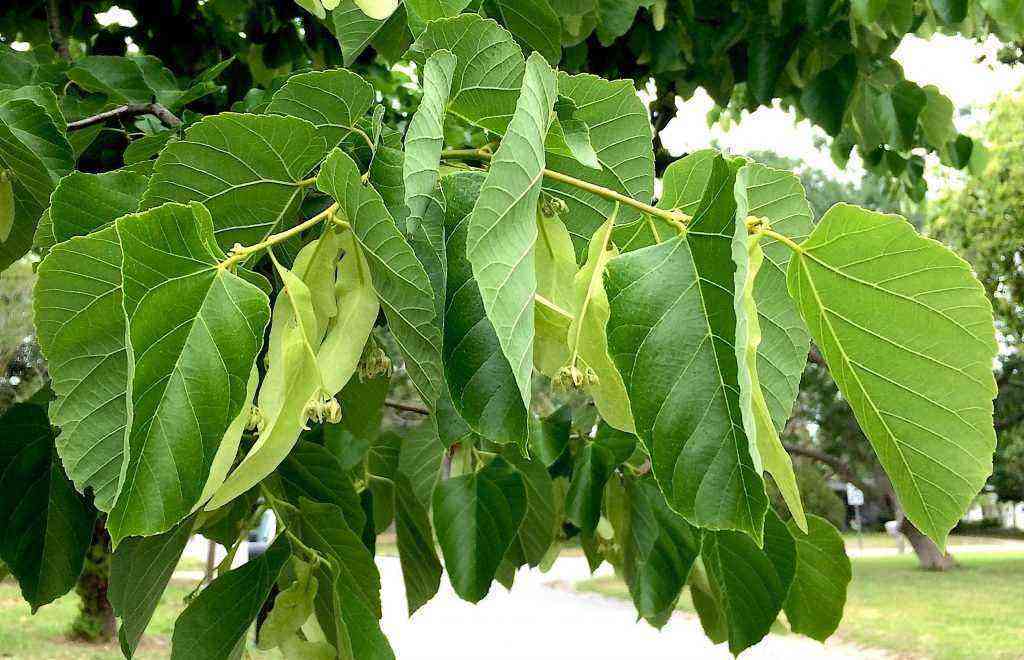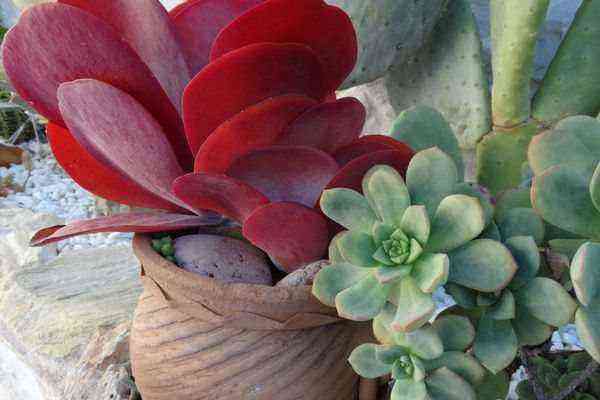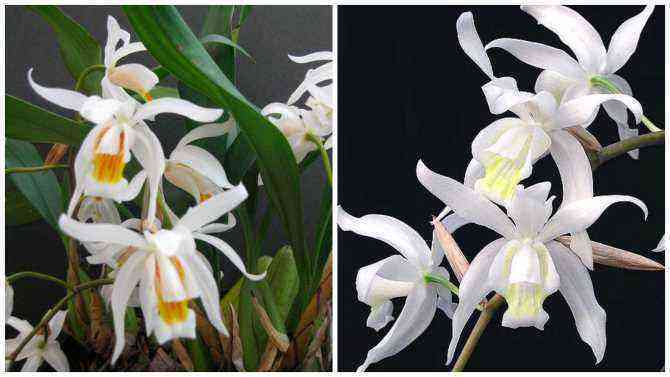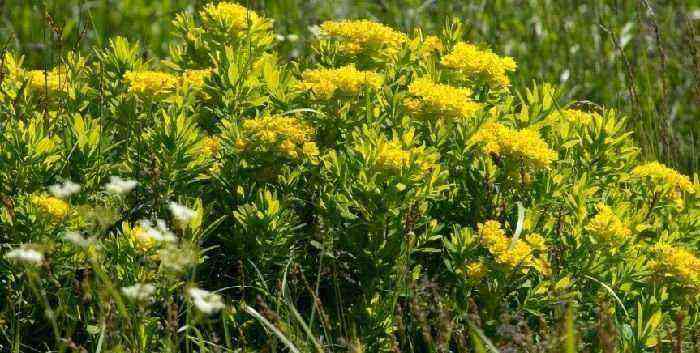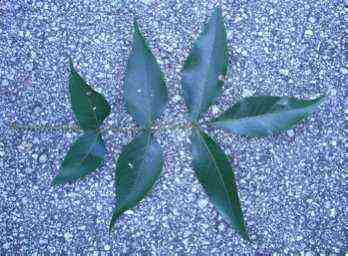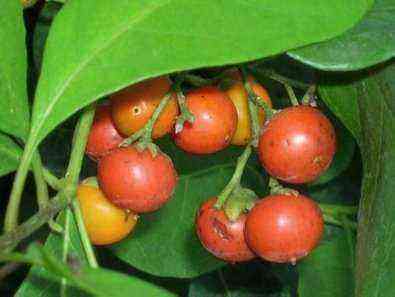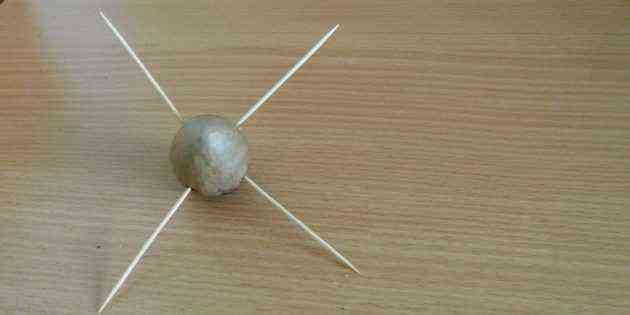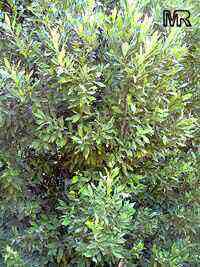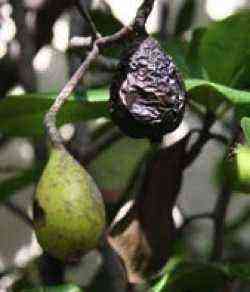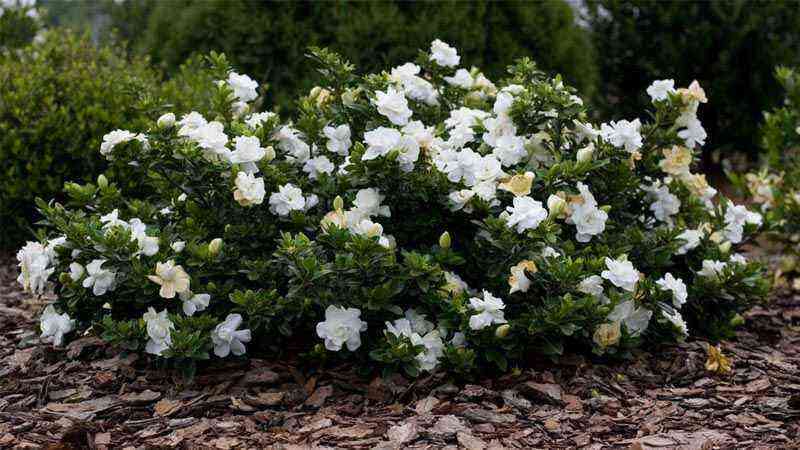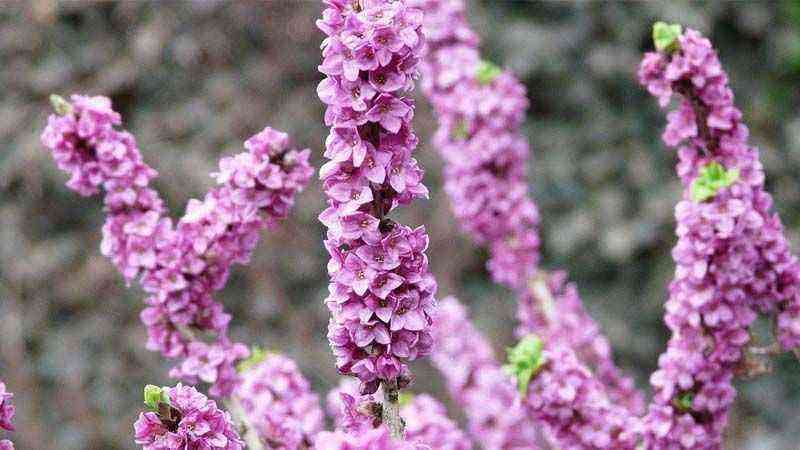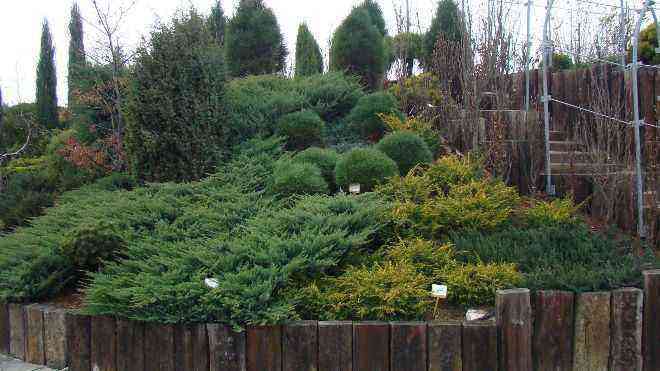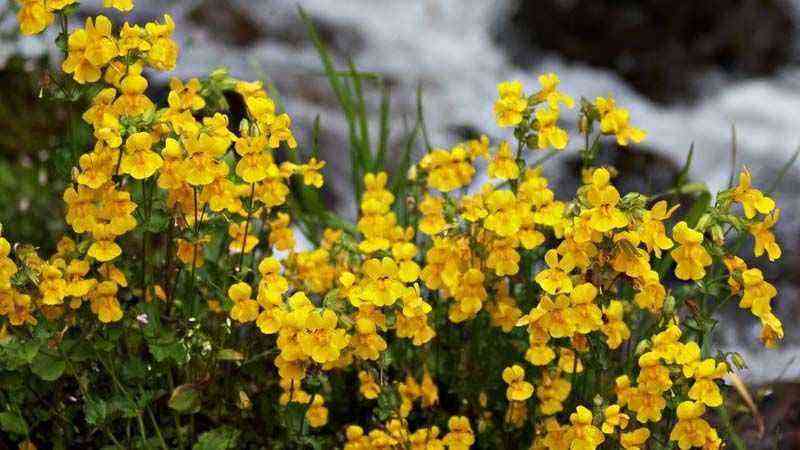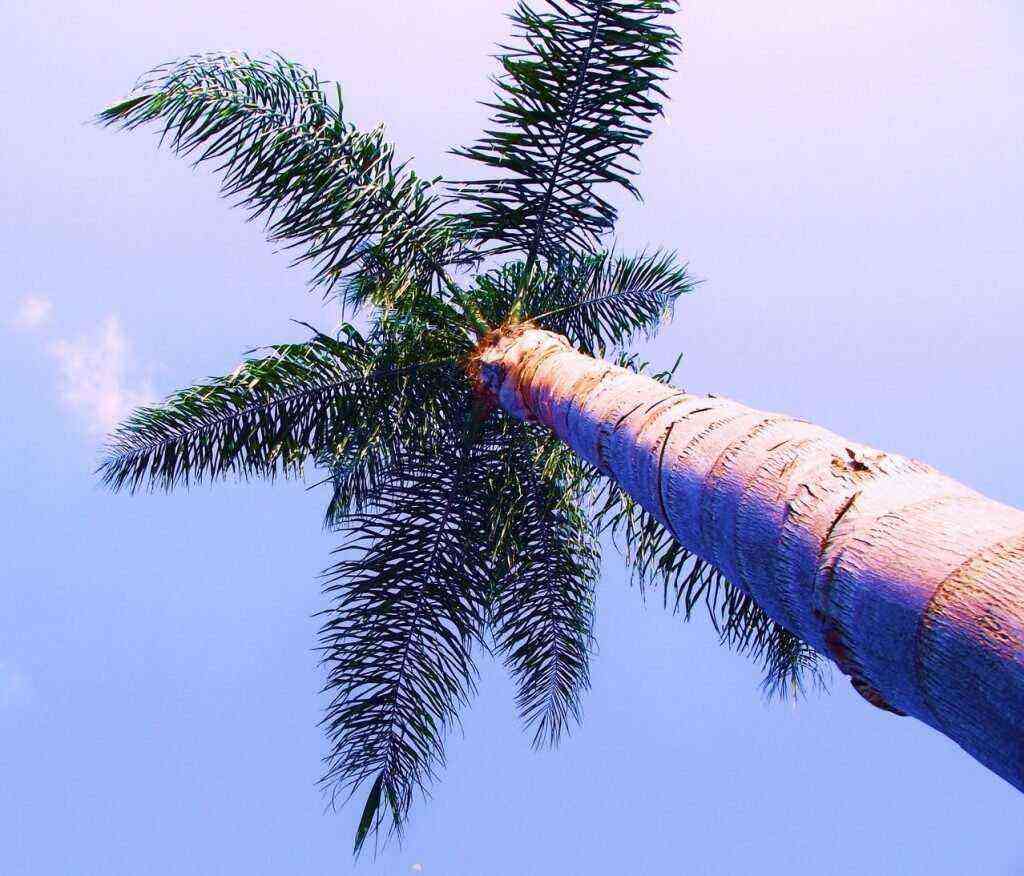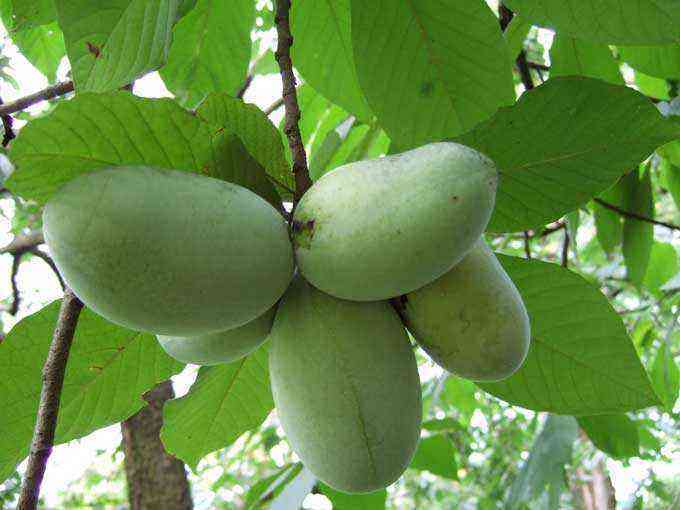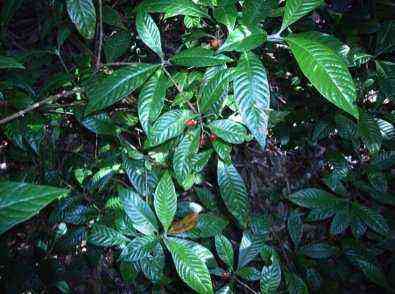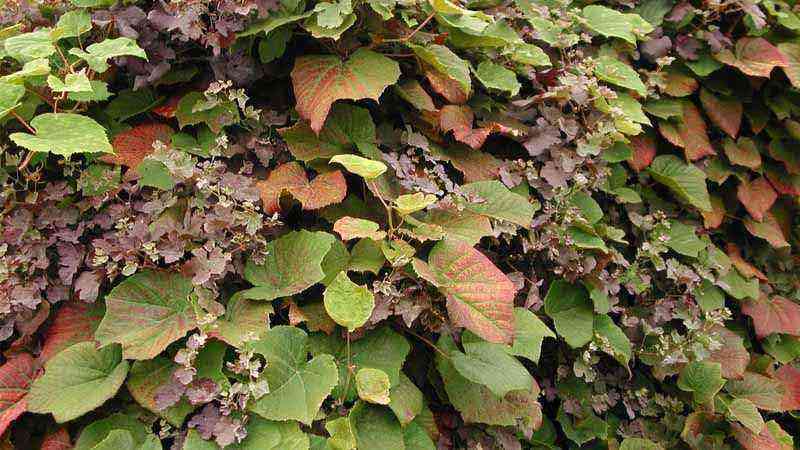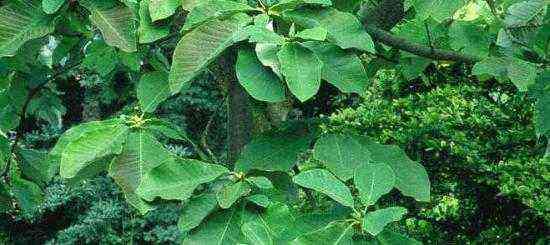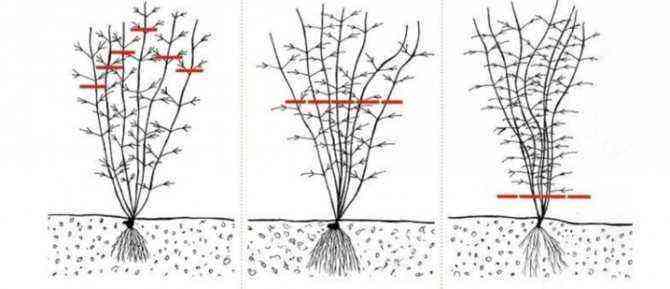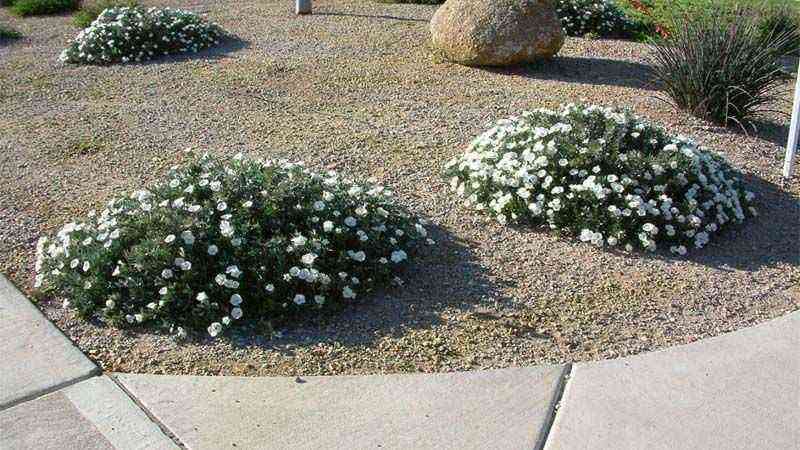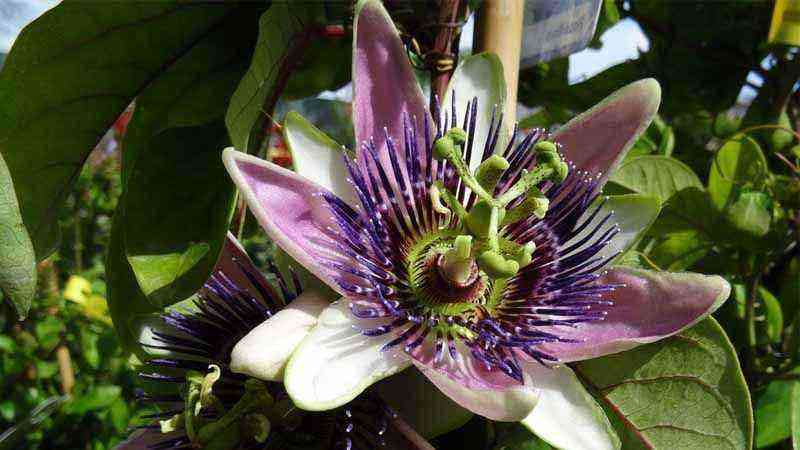It was brought to Europe from Asia from the island of Taiwan.
For the brilliant foliage of a beautiful saturated color, it is called “emerald” and “snake” tree or “Chinese doll”, “Indoor ash”.
Description
In the photo, the radermaker looks like a moderately compact bush, just for home gardening. She belongs to the Begoniev family, in natural conditions it grows into a huge tree up to 30 meters and a trunk girth of up to 1 meter.
Of course, such a giant cannot be kept in a house or apartment. Therefore, for home cultivation, only the Chinese version of the radermacher is used – it grows only up to one and a half meters.
The home ash bush has a straight trunk covered with light gray bark, drooping branches, beautiful carved foliage of bright green color.
Unlike its wild relative, which is regularly covered with large fragrant corollas (blooms only at night), indoor variety practically does not produce peduncles.
Interesting! The peculiarity of the plant is “lenticels”. These are small bumps that appear on the branches.
Radermahera

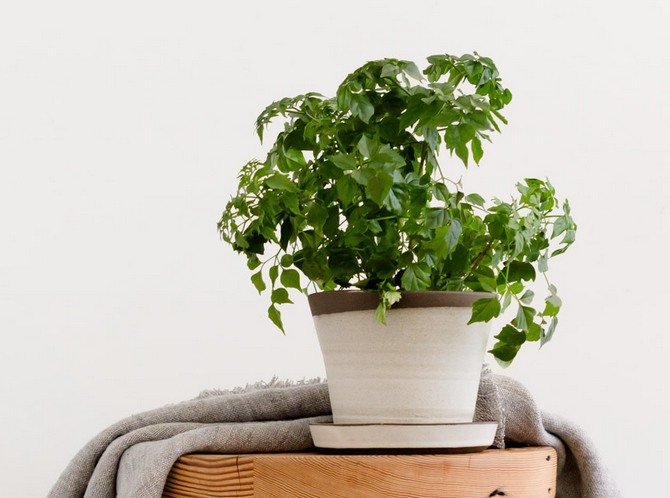
Radermachera (Radermachera) is an indoor evergreen tree that gained fame in Europe at the end of the last century, and has since become very popular among flower growers. It was brought from Asia, from the island of Taiwan, where it grew in natural conditions. The plant is named in honor of the botanist J. Radermacher who first described it, who studied new types of flowers back in the 18th century.
Radermacher belongs to the Bignoniev family and is distinguished by decorative foliage, it blooms extremely rarely at home. In nature, radermacher grows up to 30 m, with a trunk width of about 1 m. People call it the “Chinese doll” and “Snake tree”, for the glossy foliage of a beautiful dark green hue – “Emerald tree”.
Read also: The main reasons why irises do not bloom
Varieties
For cultivation in a confined space, only the Chinese plant variety is suitable. 17 plant species are described in detail, among them only a few representatives have won the greatest popularity.
Radermachera kunming (Radermachera kunming)
Endemic to Thailand, not found in other regions (only in private flower gardens and greenhouses). It grows as a compact bush no higher than 60 cm. It has rather light foliage and abundant flowering.
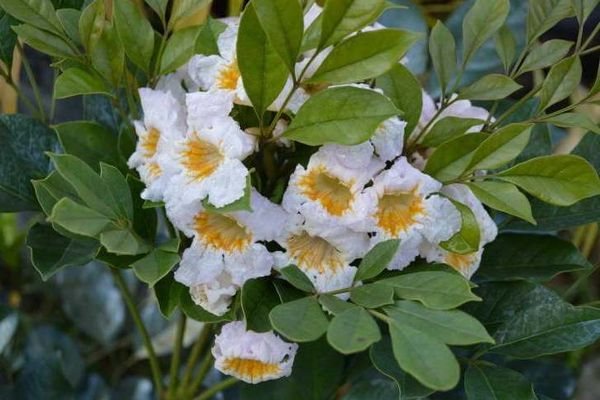
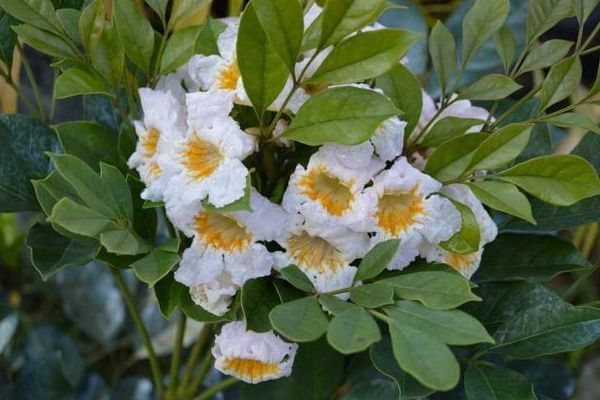
Игнеа (Radermachera ones)
Other names are fiery red, or jasmine tree. The radermaker of this species is found in Laos, Thailand, Hainan Island and Burma. In its natural environment, it will grow into a large spreading tree about 20 meters in height.
The main feature was the flowering of the plant. The flowers are vertically directed, very bright in color and open right on the trunk and branches, which gives the impression that the tree is in flames.
Unfortunately, this type of radermacher has not yet been domesticated and is not suitable for home cultivation.
Radermachera ramiflora
The birthplace of the plant is the island of Borneo. A distinctive feature of this radermacher has become a rather thin barrel – it is only 30 cm in diameter. At a height of up to 30 meters, this is very small. The leaves are large, gray-green, smooth leathery.
The plant blooms with beautiful yellow corollas… After flowering, impressive (up to 70 cm) fruits appear.

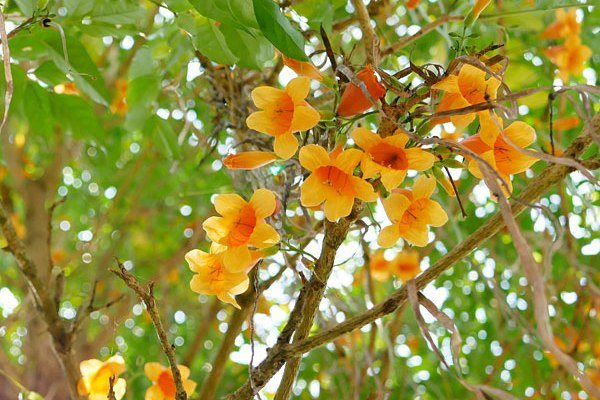
Arboreal (Radermachera xylocarpa)
This species is native to India, where it is ubiquitous. Compared to other representatives, the woody radermacher is small, only 6-10 meters in height.
Of particular interest is the tree during flowering. Among the dense emerald foliage, creamy white flowers are visible, gathered in inflorescences.
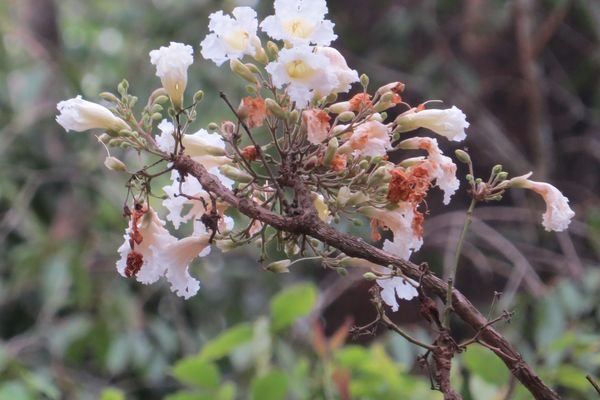
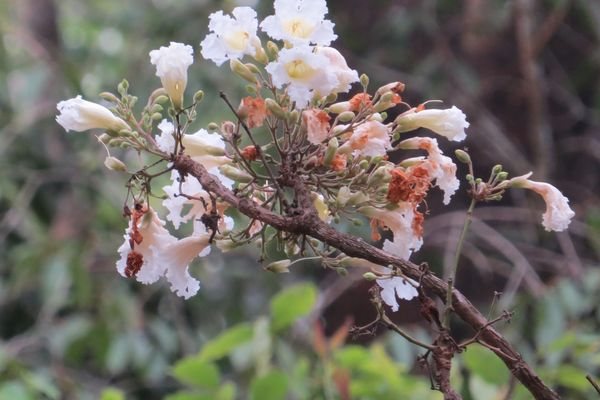
Interesting! They appear in cracks in the bark right on the trunk itself.
Botanical characteristics
The genus Radermachera (Radermachera) has about sixteen species and they are included in the Bignoniaceae family. Radarmacher is grateful for its name to the botanist – amateur from Holland Jacob Radermacher. There was another interesting name for this tree, but alas, it did not receive wide distribution of Chinese stereospermum (Stereospermum sinicum).
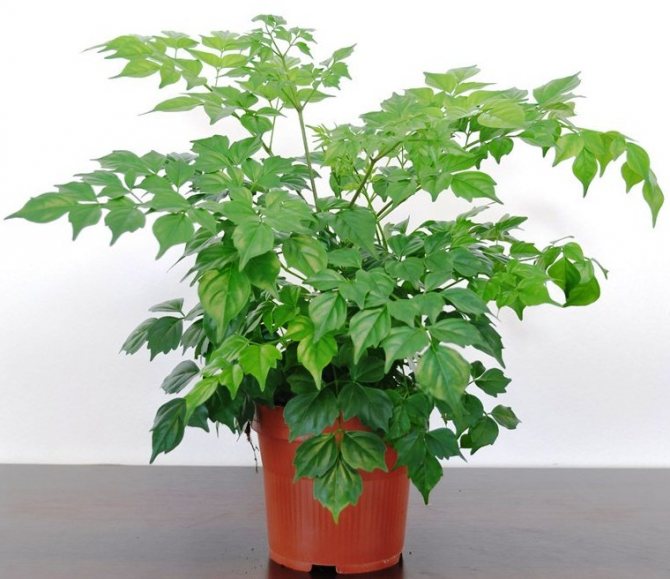
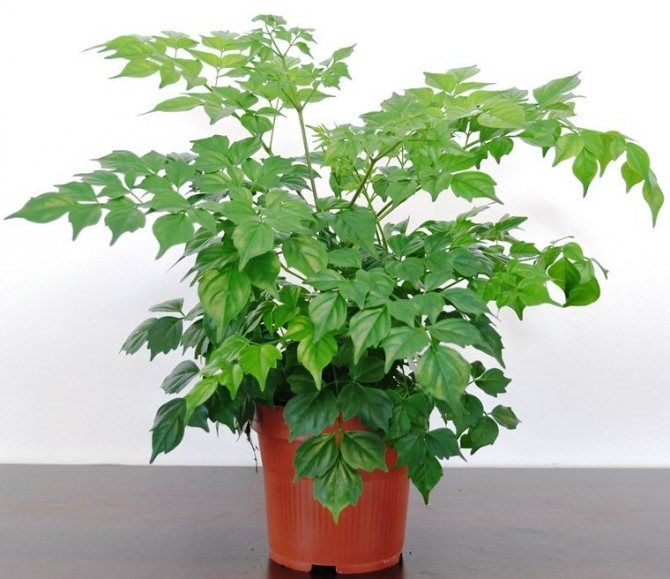
The homeland of this extraordinary tree can be considered Southeast China, the island of Taiwan, from where it was brought in in the second half of the eighties of the twentieth century. The radermacher flower has become one of the favorite indoor plants due to its unpretentiousness and ease of growing.
Presumably, due to the extraordinary beauty of the leaves, the radermacher is popularly called the “Emerrald Tree”. And other interesting names of this extraordinary branching tree in everyday life can be considered the Serpent Tree, China Doll, indoor ash.
Many species of radermacher, of this small genus, are huge trees reaching thirty meters in height with trunks about one meter in diameter. In uncultivated nature or in greenhouse conditions on a radermacher, large yellow, white or gray-yellow, bell-like, cylindrical flowers reaching seven centimeters in diameter bloom unusually beautifully only at night.
From this indescribable charm comes a pleasant smell similar to the smell of carnation flowers. The most interesting thing is that the radermacher can only see its flowering in natural wild conditions, and a houseplant can bloom only after fifteen years of age, and even this is quite rare.
Radermacher in nature is a tall, spreading tree, often with several trunks. Its height reaches 30-40 m. The trunk diameter can be up to 1 m. The houseplant is smaller, it is a lush spreading shrub up to 2 m high. Horizontal ligneous shoots grow along the main vertical trunk. They are covered with a gray-green smooth bark.

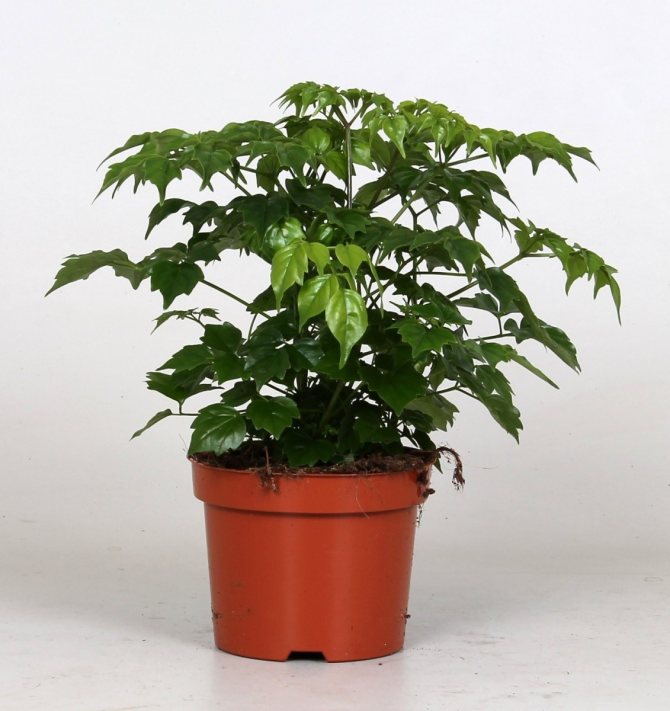
On young branches, feathery long leaves grow close to each other. Oval or ovoid leaves are located on the petioles. The length of a whole leaf reaches 20-70 cm, with a width of 15-25 cm. Individual leaves are 2-4 cm long. They have long, pointed ends and smooth or finger-like sides.
The radermaker blooms over the age of 15 years. In summer, single bells appear in the leaf axils or right on the trunk. Sometimes they gather in loose racemose inflorescences. Each bud has a very short peduncle. The length of the flower calyx reaches 7 cm. The color is cream, white or yellow-orange.
Harvest fresh and healthy mushrooms all year round!
“Home mycelium” – these are natural mushrooms with a quality guarantee. More than 5 kg of fresh and low-calorie mushrooms from one set
Learn more
After pollination, dry seed pods ripen. They contain small brown seeds with a lionfish.
Caring for a radermacher at home
Many flower growers appreciate and love the radermaker for her flexible disposition. To her no special conditions of existence are required, no need to select special components for the soil, collect melt water.
Home care is very simple: enough light and regular watering.
Location and lighting
Radermahera is bright, but poorly tolerates contact of foliage with direct sunlight – it threatens with burns.
It is optimal to place home ash on the east or west window. The south side is acceptable if the plant stands at some distance from direct streams of light, in a special stand.
Lack of light will lead to the fact that the plant will begin to reach for it, and instead of a beautiful dense crown, rickety long lashes will appear, sagging under their own weight.
Since the growth rate of the radermacher is high, it is better to immediately identify her for permanent residence on the floor in a beautiful flowerpot.
Посмотреть эту публикацию в Instagram
Post by Indoor Flowers (@komnatnyetsve) Nov 13, 2020 7:04 am PST
Temperature
Although a Chinese tree comes from warm countries, the stifling heat is not to its taste. The best temperature for the comfortable growth of a radermaker does not exceed 25 ° С… In the winter months, you can give your pet a dormant period and lower the temperature to 16 ° C.
Important! Do not let the temperature drop. Even a short stay in an atmosphere of 11 ° C can lead to hypothermia and plant disease.
Air humidity
Home ash is moisture-loving. It will favorably accept regular spraying, but will not forgive wiping – it can shed foliage. Water for humidification should be soft.
If tap water is used, it is best to let it stand for XNUMX hours. Try to spray the air around the plant without hitting the leaves.
Watering
The radermaster needs to be watered regularly, every 2-4 days as the top layer of the earth dries out in the pot… Do not allow the earthen coma to dry out, but you should not bring it to excessive waterlogging either.
Stagnant moisture in the pot will negatively affect the health of the plant. Watering is best in the morning or in the evening.when the room is cool.

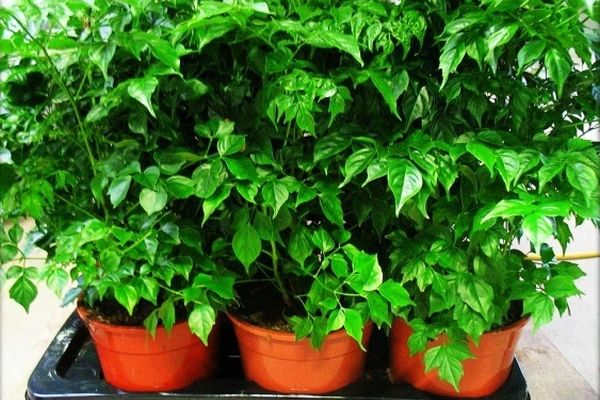
Fertilizers and fertilizers
Frequent fertilization is not required, but this does not mean that you can leave the radermaker without nutrients. Once a month, along with watering, you can apply universal fertilizers for non-flowering indoor plants.
In the spring, nitrogen fertilizers are additionally introduced, and in the fall, a potassium-phosphorus complex.
soil
Soil for a radermacher is suitable for universal (for roses or palms), purchased at a flower or garden store. The main thing is that she let air through to the roots well, was light, moderately loose and nutritious.
If you wish, you can mix the substrate yourself, while it is recommended to sift the ready-made mixture before planting the flower in order to exclude foreign objects (glass, stones, roots) from entering the pot. To prepare the mixture, you will need to take peat, turf, humus in a 1: 2: 1 ratio.
Посмотреть эту публикацию в Instagram
Posted by Kokedama Florarium Composition (@green_centre) 27 Dec 2020 at 2:13 PST
Transfer
First 3-5 years for the radermaker transplanted annually in spring, you have to do this so often because of its active growth. A young bush quickly fills the pot, and it becomes cramped.
After the age of three, the transplant can be carried out every 2 years.but if the rate of growth is maintained, it is better to stick to the old scheme with a yearly pot change. After 5 years, growth slows down, the pet is transplanted as needed.
When planting / replanting home ash, it is very important to provide him with comfortable living conditions. Its root system is very powerful and the pot must match it.
The ideal home for a radermaker will be a large one, deep flowerpot with drainage hole, ensuring the outflow of excess fluid.
You can pick up a plastic or ceramic pot, the main thing is that it accommodates the root system and gives a small margin for growth.
Illumination
Radermacher is a house plant that adores light, but does not tolerate direct sunlight. They can injure it, leaving burns on the leaves, which not only reduces the decorative effect, but can end in the death of the plant.


If it is planned to grow it on a windowsill, it is better to choose windows facing west or east, or, if there is no choice, and the window faces south, it is necessary to organize protection for the tree from direct sunlight.
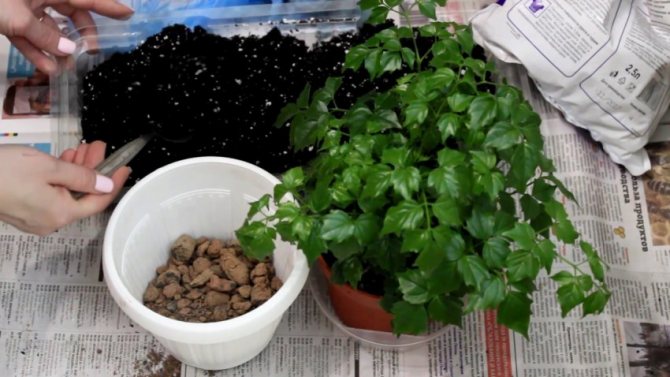
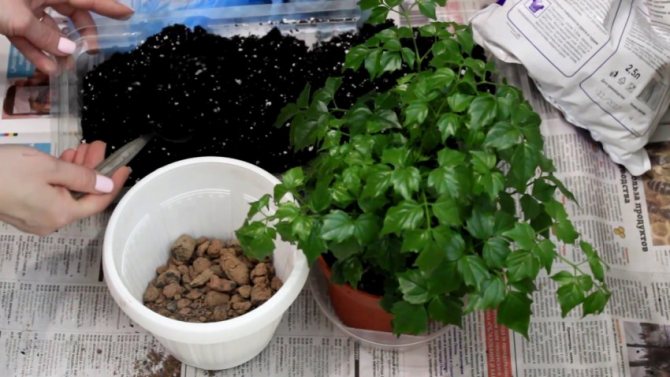
To obtain a symmetrical, dense crown, it is better to periodically turn a pot with a Taiwanese beauty with one or the other side to the light.

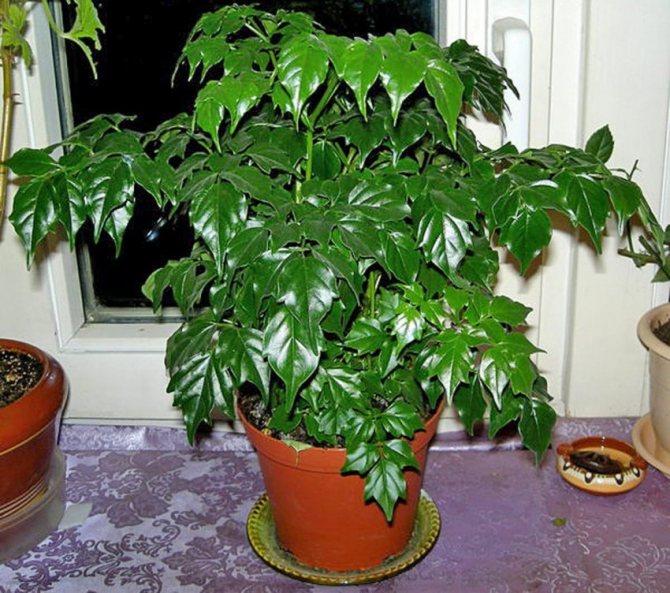
Reproduction of the plant in the home
The Chinese tree is propagated by vegetative methods. (cuttings, air layers) and seeds… It practically does not reproduce by seeds at home, since it blooms very rarely, and it is extremely difficult to obtain seed material. But vegetative methods are often used by flower growers.
Propagation of radermachers by air layers
For the formation of aerial roots, a healthy, strong branch is chosen. With a sharp, sterile knife, a small area of the bark at the base of the branch is cut off and wet sphagnum moss is applied, wrapped with cling film.
The structure must be well fixed so that the moss does not slide out. Moss is moistened as needed. About after three weeks the first aerial roots are formed.
To be sure, you can wait another 1-2 weeks and separate the branch with roots from the mother plant. The finished seedling is planted in an individual pot and then looked after as an independent plant.

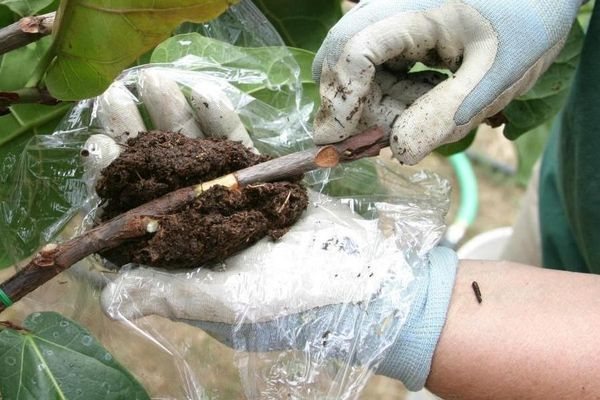
Rooting of cuttings
Another popular method of vegetative propagation of the Chinese tree is cuttings.
Cuttings are cut at the end of May – June from the apical shoots with several leaves. The cut site can be treated with a root formation stimulant and planted in a container filled with a mixture of peat and sand in equal proportions.
To improve rooting, it is recommended to cover the seedling with a film or a cut plastic bottle to make a greenhouse.
Important! Air the seedling daily and water as the substrate dries.
About after 25-30 days, the stalk takes root (as evidenced by the emerging new leaves), and it can be transplanted into a permanent pot.
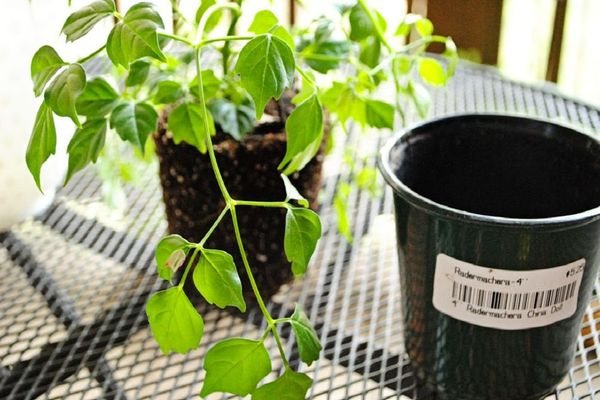
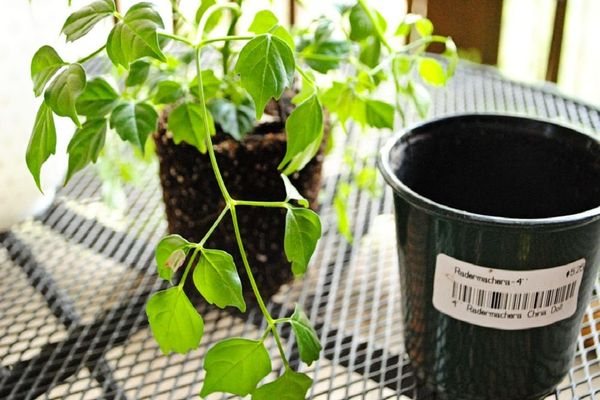
Boarding and transfer tips
The optimal period for transplanting a flower is the first half of March. It is recommended to replant young plants annually, adults (over 5 years old) – every two to three years. Roots emerging from the drainage hole serve as a signal for transplantation.
When choosing a pot, it is advised to focus on the diameter of the previous one (the new pot should be more than only 2-3 cm). Do not give the plant too much room. The Chinese pupa will not grow until the roots fill the new space. Such is her property. It is also worth paying attention to the size of the drainage holes, they must be large enough so that the next transplant does not cause severe damage to the root system.
The soil is of great importance for the radermacher. Therefore, you should carefully approach the choice of soil. A versatile soil or soil for citrus palms works well.
The transplant process is as follows:
Friends! As part of our portal, we launched a book on how to make a lawn with your own hands. If this topic interests you, then READ MORE >>
- to the bottom of the pot – drainage (3 cm will be enough);
- we fill the soil by about a third;
- we moisten the soil;
- we take a plant with a lump of earth;
- pruning dry roots and tops;
- sprinkle the sections with chalk (activated carbon can be used);
- do not touch for several hours;
- put in a new pot;
- fill up the soil;
- tamp it carefully;
- moisturize.
Reproduction
There are three ways to propagate an emerald tree:
- Cuttings – you can take flowers at least three years old. Cuttings are the tops of the shoots approximately 8-12 cm long, with nodules of nascent leaves. It is important that they do not show signs of illness. The cuttings are either placed in water or rooted in the ground.
- Air layering – an adult plant with strong ligneous branches is taken. A shallow cut is made on the branch along the ring. The incision is “wrapped” in a layer of moist moss and tightly closed with polyethylene. The trunk is separated when the newly formed roots reach a length of at least 5 cm.
- Seeds are not popular. In some specialized stores you can find indoor ash seeds (another popular name). The seed is placed in a mixture of peat and sand (equal proportions) to a depth of 1 cm, covered with a jar on top to create a greenhouse effect. It is periodically necessary to ventilate and water. Seedlings will take about two weeks to grow.
Pruning, crown shaping
The plant can be formed in two ways: a bush and a tree. But this must be done, because the radermaker is growing very quickly. The flower easily tolerates pinching, so it is quite easy to give it the necessary shape.
The twigs cannot be broken; you need a pruner or scissors. It is better not to remove more than 1/5 of the crown at a time.
To shape the tree, extra side shoots should be removed throughout the plant’s life, leaving the central trunk. To give it a bonsai style, the twigs can be twisted, bent and weighted with the help of available tools, until they become stiff. From time to time, unfold the flowerpot so that the crown forms evenly.


Diseases and pests
If the care technology is violated, the radermaker can get sick. Most often, flower growers meet the following symptoms:
- Blackness on the leaves and their fall… In this case, it is worth reducing the number of waterings. The reason may be the beginning of decay of the root system. If the technique did not help, the plant needs to be transplanted, if necessary, remove the roots damaged by rot.
- The leaf plates stretch and become small… This is the first sign of a lack of light. If it is not possible to provide a sufficient light flux from the window, the plant will have to be supplemented with phytolamps for seedlings.
Radermacher driest what to do? This is most often due to a lack of moisture. It is necessary to increase the frequency of watering and closely monitor the condition of the plant.
Посмотреть эту публикацию в Instagram
Posted by Window Garden (@sadik_na_okoshke) 2 Dec 2020 at 5:50 PST
The main pests infesting home ash are spider mites, aphids, whiteflies, scale insects and mealybugs… If parasites are found, the plant must be treated with an insecticide solution strictly according to the instructions. In a difficult case, a transplant will be required with a complete replacement of the contaminated land.
Why do the radermacher’s leaves turn yellow and fall?

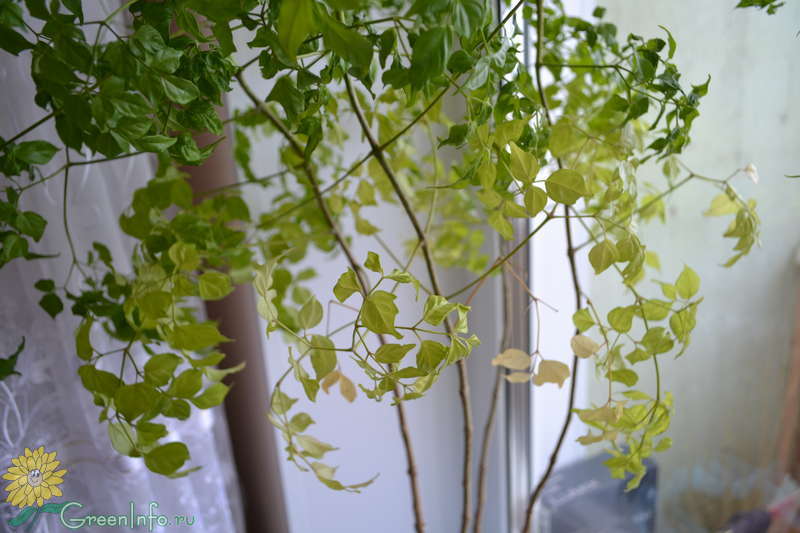
If the leaves on the plant fall off or turn yellow, then it is necessary to adjust the main measures for the care of the ornamental culture:
- insufficient lighting in the growing room;
- insufficiency of irrigation measures or excessive introduction of water into the soil lump during irrigation;
- depletion of the soil substrate or improper feeding.
Also, too dry air, drafts or improper temperature conditions can become the causes of foliage falling and yellowing.


Multifunctional shovel with 25 useful functions
The Brandcamp shovel is an indispensable tool for hunters, fishermen, summer residents, tourists, fans of extreme sports and outdoor activities. A great gift for any man!
Learn more
How to shape a bonsai style radermaker
The Chinese tree is a gratifying material for the formation of a bonsai-style tree. Many growers carry out planned pruning in the spring to form a crown and remove dried and too elongated shoots.
But if you focus on decorative trimming, only in a few years you can get a wonderful dwarf specimen.
To do this:
- Pick up a small container so that the roots are cramped.
- The soil should be taken not the most nutritious, top dressing should be applied only in case of an obvious lack of trace elements.
- When transplanting, you need to form the root system, cutting off the tips, but without fanaticism, so as not to destroy the plant.
- To form a beautiful openwork crown, weights are hung on the branches. It is necessary to hold the load until the branch becomes lumber.
- Try to evenly illuminate the tree from all sides to form an even crown.
- Some bonsai masters recommend cutting the bark to age the tree faster.
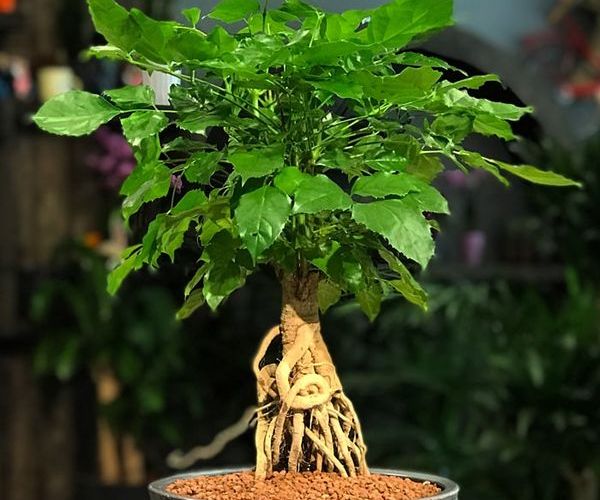
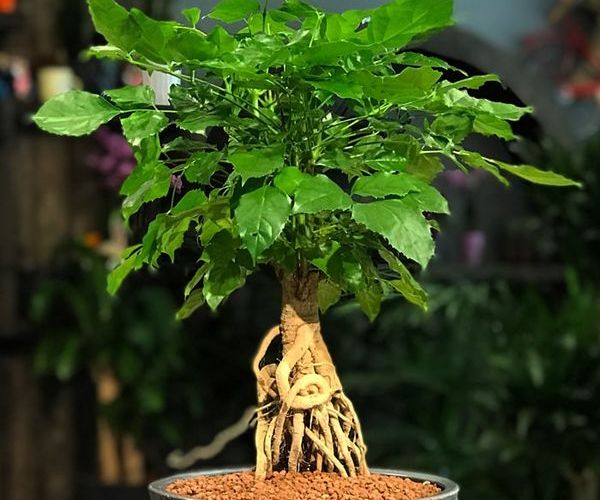
Possible difficulties in growing
Sometimes, despite the full care of the plant, unpleasant external changes occur with it, the cause of which is difficult to identify. These changes usually include:

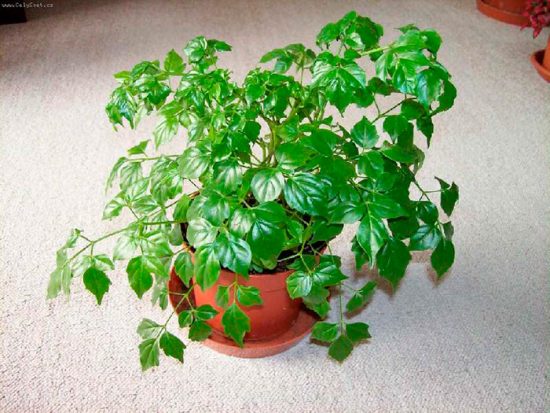
- Wilted leaves. Leaves can droop in two cases: when the plant receives less precious moisture, or when it receives it in excess. In the first case, the amount of water applied to the soil should be increased. In the second, transplant the plant.
- Yellowing and falling leaves. Most often, such a nuisance occurs when the tree receives an insufficient amount of light. Correcting the situation is not difficult: put the pot with the radermacher in the right place.
- Shredding the leaves. If the plant is in a too dark place and does not receive an insufficient amount of nutrients, the leaves will definitely begin to shrink and fade. Solution to the problem: good lighting and a change in temperature.
- Pulling shoots. Provide adequate lighting and keep the flower in a cool place to prevent the shoots from pulling out.
That’s all the nuances that should be taken into account when growing a radermaker at home. Good luck!
Flower bed design. TOP 10 simple and effective techniques
If you are going on vacation
How to water the radermaker if you are going on vacation? So that the tree does not die, waiting for the owners from vacation, you can do it yourself autowatering.
The easiest way is to make a hole in the lid of a plastic bottle, fill it with water and, turning it over, place it in a pot so that the neck is deepened into the ground. As the soil in the pot dries up, moisture will come out of the bottle.
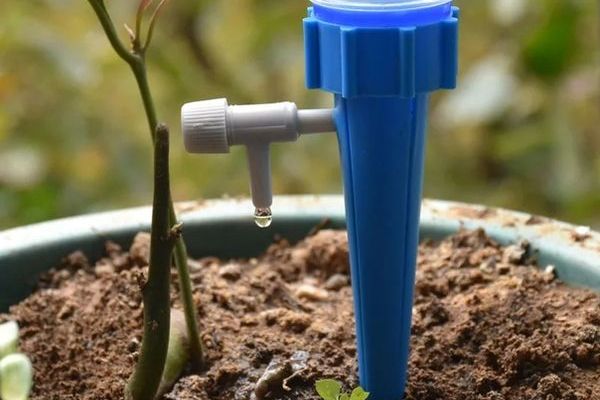
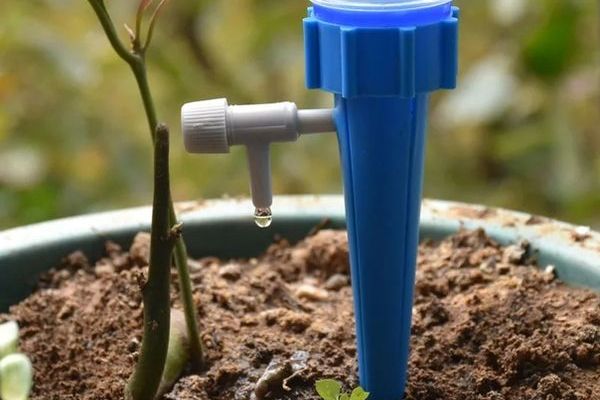
Another way to preserve the plant is put the pot in a tray of water.
Important! Before organizing automatic watering, the plant is pre-watered well.
Radermacher is a beautiful and unpretentious plant that, with proper care, will become a faithful friend for many years. It fits perfectly into the interior of any room, and if you give it the opportunity to grow unhindered, it can become an adornment of even a very large hall.
Rademacher omens and superstitions
It is considered a plant that favorably affects the atmosphere in the house, eliminates despondency and sadness. The relationship of the inhabitants of the family makes them warm and friendly. The plant absorbs negativity, calms and improves mood.
The emerald tree should be installed for those who are trying to find their peace of mind. Energy flower repels the evil eye and damage, after which the flower dies, even if it has the best conditions of detention. If you put a flowerpot with a plant on the windowsill, then it unites relatives and brings respect to each other.
